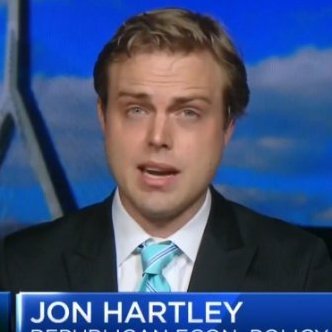
Felix Geiger
@Flx_Geiger
Followers
2K
Following
4K
Media
273
Statuses
2K
@bundesbank | views are my own | private | monetary policy, financial markets, finance, economics | retweets, likes and following do not imply endorsement
Frankfurt am Main, Deutschland
Joined July 2021
Here's a possible explanation. Higher exports from China crowd out production of high-tech goods and innovation in the rest of the world. Over the medium term, GDP in the rest of the world drops because of lower productivity growth.
1/ Fascinating and important report from Goldman Sachs. They have upgraded long-term GDP of China because of increased exports, but see this as reducing, not increasing, rest of world GDP. Chinese displacement of domestic manufacturing swamps any positives from cheaper goods.
14
80
345
Tariff shocks work through weaker aggregate demand (adverse uncertainty and wealth effects). This effect might even be stronger than the direct cost-push effects with inflation falling.👇
SF Fed study examines 150 years of U.S. tariffs and find that they lead to lower inflation and weaker aggregate demand (which raises unemployment) https://t.co/d7d9WmIHHJ
0
0
0
Central bankers face a 'balancing act' as they weigh a rate cut in December, New York Fed president John Williams told the FT. https://t.co/vGutftjays
11
34
98
Let me explain why I believe modern economics is such a powerful tool for understanding the world. I’ll do this by discussing a great paper by Simone Cerreia-Vioglio, @UncertainLars, Fabio Maccheroni, and Massimo Marinacci, “Making Decisions Under Model Misspecification,”
45
476
2K
New paper: “Beyond the Taylor Rule” joint with Emi Nakamura and Venance Riblier. Emi presented this paper at the Jackson Hole Symposium. We investigate how descriptive and how prescriptive the Taylor rule is. 1/ https://t.co/ag3IAJGPQg
20
101
428
“The simple test is whether an economist's views tend to diverge from those of his ideological allies when the ideology clashes with the economics. If they do he is a real economist. If they do not, he is only an economist in working hours.” https://t.co/Krtnca5VN2
3
26
121
Higher‐order moment conditions can identify non‐Gaussian SVARs—but do they increase efficiency in a recursive SVAR? 👉We show that bivariate coskewness and cokurtosis conditions lead to efficiency gains, while non-bivariate conditions are redundant.
1
1
3
Ein paar Bemerkungen zum so genannten EU-US Zolldeal: (1/10) Ein trauriger Tag für den Freihandel: 15% Zoll auf EU-Waren in den USA ist besser als 20 oder 30%, keine Frage. Aber der „Deal“ ist teuer erkauft. Vielleicht zu teuer.
103
402
2K
"The Elastic Markets Hypothesis" new paper w Felix Gerding. Using country index additions/subtractions, we find multipliers (of flows on stock market prices) are not as high or permanent as recent lit. Stock market demand may be inelastic in short-run but is elastic in long-run🧵
3
23
126
Models based on Geiger and Schupp (2018) for the nominal OIS curve and on Bauer and Rudebusch (2020) applied to the ILS curve. 2/2
0
0
1
Current EA risk-free OIS yield behaves quite normal these days according to a model decomposition 1/2 ➡️ inflation expectations at 2% target ➡️ real rate expectations at slightly above 0% (r*) ➡️ inflation risk premium negligible ➡️ gradual real term premium de-compression
1
0
6
The natural interest rate (r*) is the real rate that would prevail in the long run. The standard view in macro is that r* depends exclusively on structural factors such as productivity growth or demographics. A short 🧵 a new paper 1/n (n=6) https://t.co/PcIzhZvDcx
5
86
431
New paper on recent US tariffs with Matt Rognlie and @a_auclert Our focus: effects of temporary increases in tariffs (“tariff shocks") Three Qs: 1 Will tariffs lead to a recession? 2 Will they reduce the trade deficit? 3 Why are they not appreciating USD? (as in std theory) 🧵
6
177
618
New paper with @mw_econ on Fiscal Stagnation. Key insights: 1) High public debt may push the economy into fiscal stagnation, i.e. a persistent state of low growth and high fiscal distortions. 2) Pro-growth policies are crucial to exit stagnation, but they require credibility.
12
108
376
New paper: with LLMs and firm-level text, we track in real time how American and global companies are reacting to tariffs, export controls, and financial sanctions. 🇺🇸🌏 In Q1 2025, even before "Liberation Day", we see a sharp surge in reported economic pressure. 🧵(1/x)
1
21
55
Do the media focus on the negative? If so, why? We study this in the context of stock market reporting and identify and quantify an overlooked bias.
2
9
29
Trump pivoted, but we’re not going back to where we were before. We have learned a few things: 1) Trump will respond to a certain level of pain in markets. 2) The Treasury market is perhaps the most important player in markets right now. 3) There can be exemptions. (1/3)
85
219
2K
BREAKING: Commerce Secretary Lutnick on the "tariff exemptions" announced this weekend: "They are exempt from reciprocal tariffs, but they are INCLUDED in the semiconductor tariffs which are coming in a month or two." So basically, they are not tariff exempt just recategorized?
248
405
3K
Don't blame the plumbing of Treasury markets, blame Congress and the White House. Not the unwinding of the basis trade in US Treasury markets, but the response to a large, macro shock. March 2020 was the first sign of cracks in the global safe asset supplier armor. April 7 and
35
304
1K

















